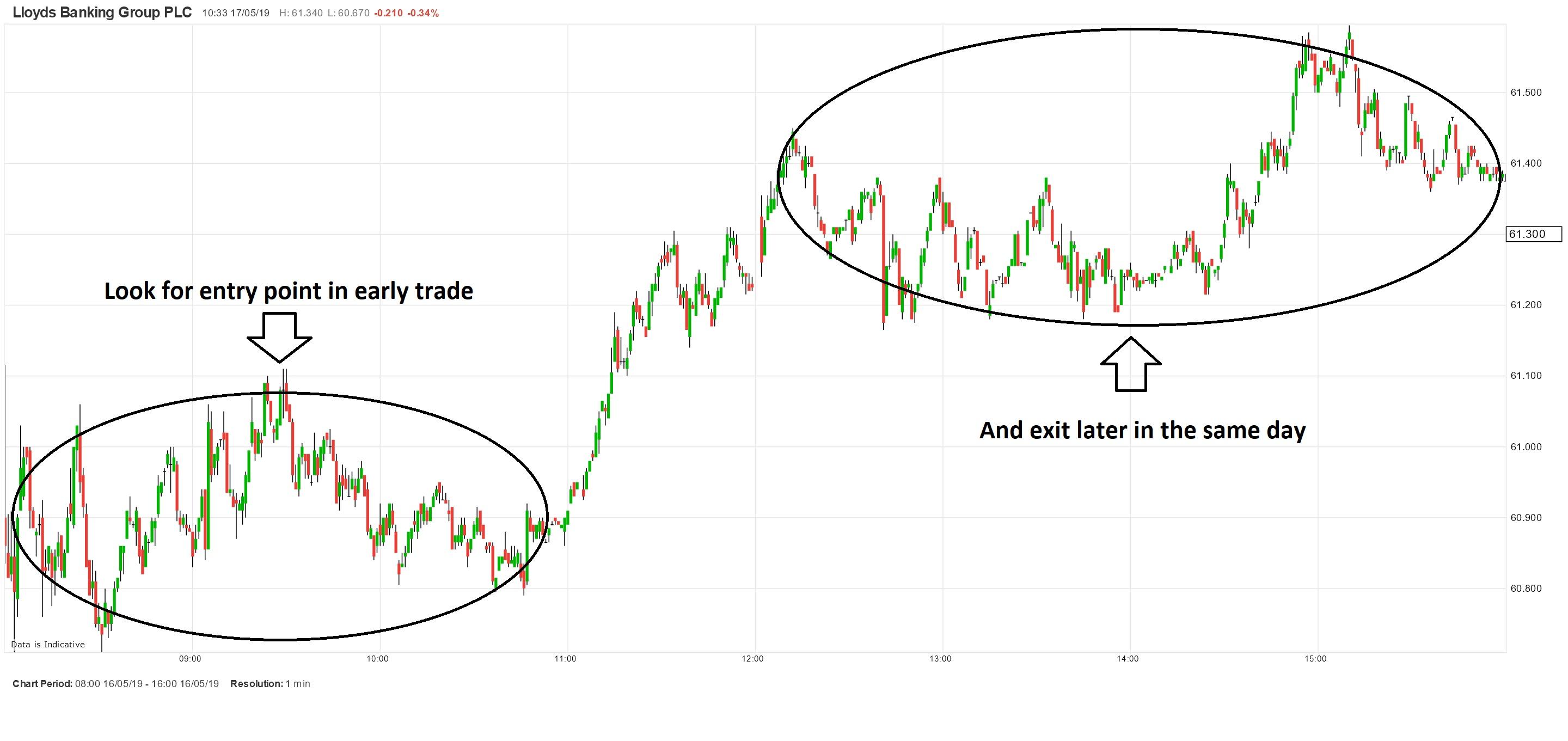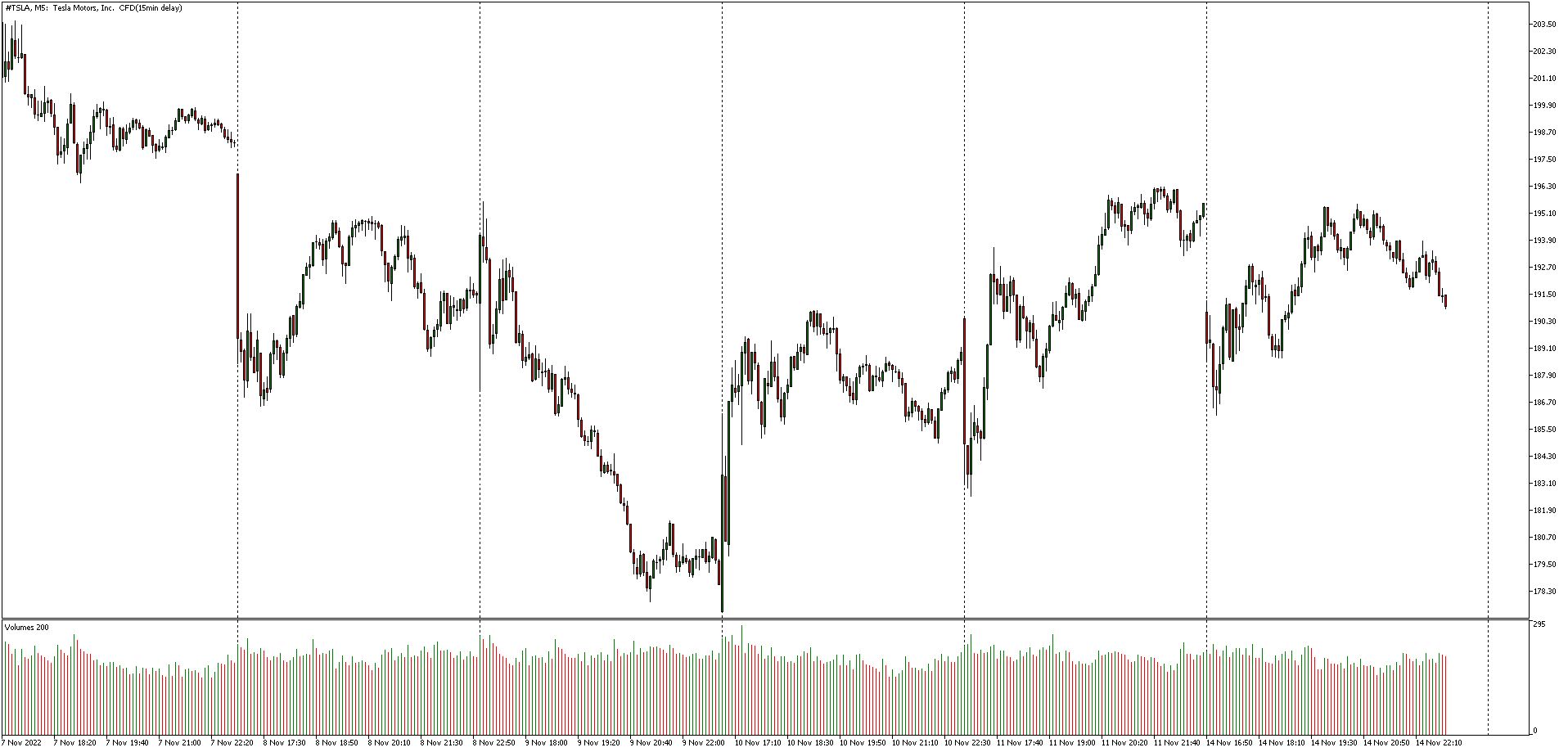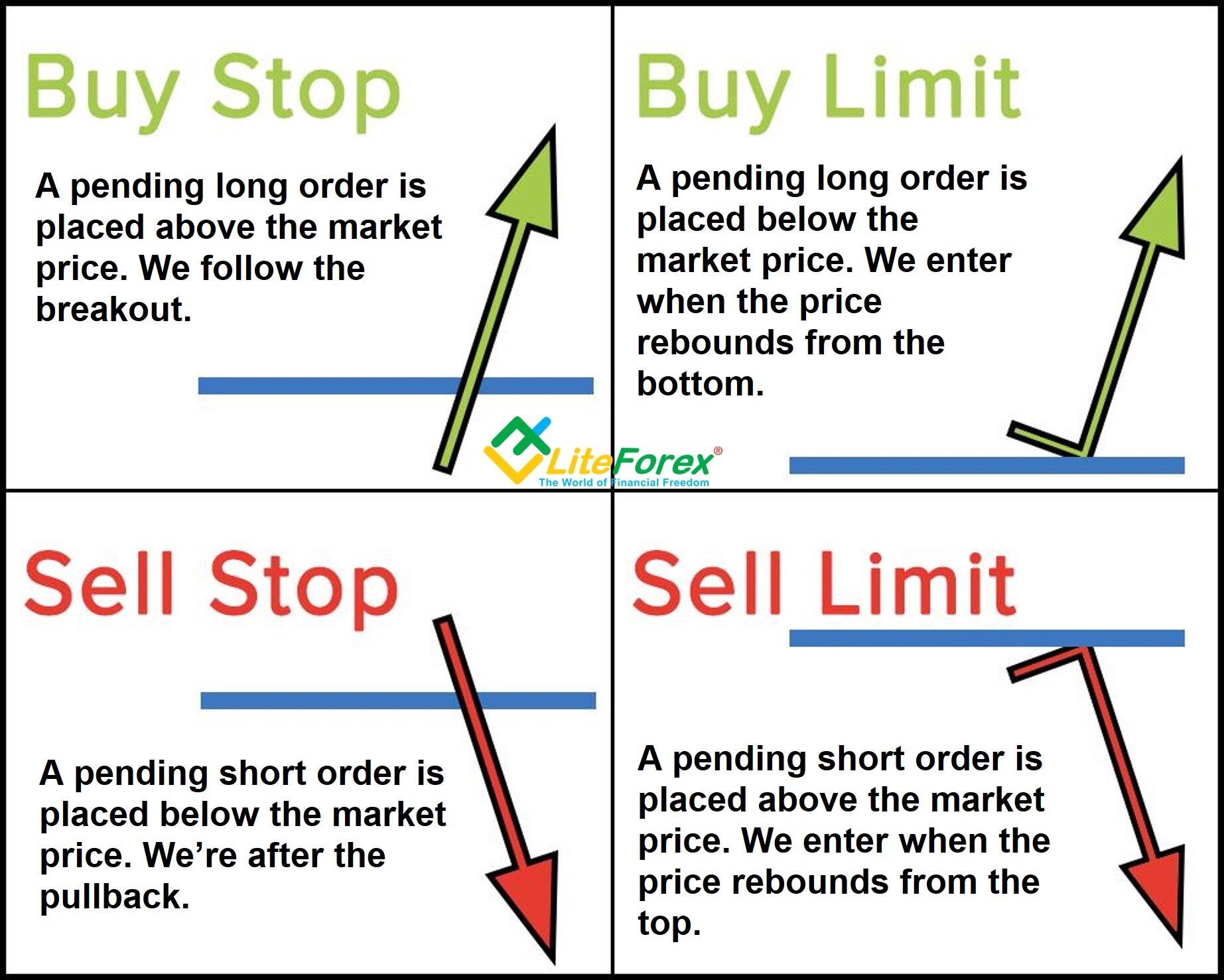Introduction
Welcome to the world of day trading stocks! If you’re interested in amplifying your income and taking advantage of short-term market fluctuations, day trading may be the perfect fit for you. Day trading involves buying and selling financial instruments within the same trading day, allowing traders to potentially profit from both upward and downward price movements. It requires a combination of skill, knowledge, and a disciplined approach.
In this article, we’re going to explore the concept of day trading stocks and discuss what makes certain stocks well-suited for this type of trading. We’ll delve into the characteristics that define good day trading stocks, provide examples of popular stocks in this arena, and share strategies for achieving success in your day trading endeavors. Additionally, we’ll discuss the risks and challenges associated with day trading stocks and provide guidance on how to choose the right stocks to enhance your trading performance.
Before we proceed, it’s important to note that day trading is not without its risks. Market volatility, sudden price fluctuations, and the potential for losses are all inherent in this form of trading. It requires a thorough understanding of the market, technical analysis, and risk management practices. However, armed with knowledge and the right tools, day trading stocks can offer significant profit potential and exciting opportunities.
Whether you’re an experienced trader looking to delve into the world of day trading or a beginner exploring different investment options, this article will serve as a comprehensive guide to help you identify good day trading stocks, develop effective trading strategies, and navigate the challenges that come with this type of trading.
So, let’s dive in and gain a deeper understanding of what it takes to be successful in day trading stocks!
Understanding Day Trading Stocks
Day trading stocks is a fast-paced and dynamic approach to trading in the financial markets. Unlike traditional investing, which involves holding stocks for longer periods, day traders aim to take advantage of short-term price movements to generate profits. This timeframe can range from a few minutes to several hours, but day traders always close their positions before the market closes for the day.
The primary objective of day trading stocks is to capitalize on volatility in the markets. Day traders use various tools and techniques to identify short-term trends and patterns that can provide opportunities for quick gains. Technical analysis plays a crucial role, with traders analyzing price charts, indicators, and other market data to make trading decisions.
It’s important to note that day trading stocks requires active involvement and constant monitoring of the markets. Traders need to stay updated on news, economic indicators, and company-specific events that can impact stock prices. This real-time information allows day traders to enter and exit positions swiftly, maximizing their potential profits.
Another key aspect of day trading stocks is leverage. Many day traders utilize margin accounts provided by brokerage firms, allowing them to borrow funds to amplify their trading positions. While leverage can increase potential gains, it also magnifies the risk of losses. This makes risk management crucial in day trading, with effective stop-loss orders protecting traders from excessive losses.
Day trading stocks is not a strategy for the faint of heart. It requires discipline, focus, and a thorough understanding of the markets. Emotions can often cloud judgment, leading to impulsive decisions that can result in financial losses. Successful day traders develop a trading plan, stick to their strategies, and control their emotions to avoid making irrational trading choices.
In the next sections, we’ll explore the characteristics of stocks that make them suitable for day trading and discuss popular day trading stocks that you can consider for your trading activities. By understanding the dynamics of day trading stocks, you’ll be better equipped to navigate the fast-paced nature of the markets and make informed trading decisions.
Characteristics of Good Day Trading Stocks
Choosing the right stocks is crucial for successful day trading. Not all stocks are well-suited for this fast-paced trading style, as certain characteristics lend themselves better to the quick in-and-out nature of day trading. Here are some key characteristics to consider when identifying good day trading stocks:
- Liquidity: Good day trading stocks have high liquidity, meaning they have a large number of shares being bought and sold throughout the trading day. This ensures easy entry and exit from positions without significantly impacting the stock’s price.
- Volatility: Day traders thrive on price volatility. Stocks that exhibit significant price movements within a short period provide opportunities for quick profits. Volatile stocks tend to have higher trading volumes and are preferred by day traders.
- Tight Bid-Ask Spread: The bid-ask spread represents the difference between the highest price a buyer is willing to pay (bid) and the lowest price a seller is willing to accept (ask) for a stock. Narrow spreads indicate high liquidity and reduce trading costs, making it more favorable for day traders.
- Stocks with News Catalysts: Stocks that have recently announced significant news or events, such as earnings releases, mergers, or product launches, tend to experience increased volatility. Day traders often capitalize on these catalysts to identify potential profitable trading opportunities.
- Technical Analysis Patterns: Stocks exhibiting clear chart patterns or technical indicators, such as breakouts, trend reversals, or support and resistance levels, are favored by day traders. These patterns can provide entry and exit points for trades based on historical price action.
It’s important to note that while these characteristics are desirable for day trading stocks, they aren’t foolproof guarantees of success. Day traders must still conduct thorough research, implement risk management strategies, and constantly monitor the markets to make informed decisions.
In the next section, we’ll highlight some popular stocks that are commonly traded by day traders. These stocks possess many of the characteristics mentioned above and have a history of attracting active traders who seek short-term opportunities for profit.
Popular Day Trading Stocks
Day traders have a wide range of stocks to choose from, but certain stocks are particularly popular among day traders due to their liquidity, volatility, and trading volume. Let’s take a look at some of the top stocks that are frequently traded by day traders:
- Apple Inc. (AAPL): As one of the largest technology companies in the world, Apple attracts significant trading interest. Its strong liquidity, frequent news catalysts, and price volatility make it an appealing choice for day traders.
- Amazon.com, Inc. (AMZN): With its dominant position in e-commerce and cloud computing, Amazon generates substantial trading activity. The stock’s high price and volatility offer opportunities for day traders to profit from short-term price movements.
- Alphabet Inc. (GOOGL): Google’s parent company, Alphabet, is another popular choice among day traders. Its strong liquidity, news catalysts, and volatile price movements make it an attractive stock for those looking to capitalize on short-term fluctuations.
- NVIDIA Corporation (NVDA): As a leading graphics processing unit (GPU) manufacturer, NVIDIA is favored by day traders for its rapid price movements, high trading volume, and frequent news updates related to the tech industry.
- Netflix, Inc. (NFLX): Known for its streaming platform, Netflix is a popular stock among day traders due to its volatility and active trading volume. News surrounding new content releases, subscriber growth, and competition tend to drive price fluctuations.
These are just a few examples of popular day trading stocks, but there are many other options available in different industries and sectors. Keep in mind that popularity and trading activity can change over time, so it’s important to stay updated on market trends and take advantage of emerging opportunities.
In the next section, we’ll dive into strategies that can help you succeed in day trading stocks. These strategies, when combined with the right stock selection, can give you an edge in the fast-paced world of day trading.
Strategies for Successful Day Trading
Successful day trading requires a well-defined strategy and disciplined approach. Here are some strategies that can help increase your chances of success in the dynamic world of day trading stocks:
- Develop a Trading Plan: Before you begin day trading, create a comprehensive trading plan that outlines your goals, risk tolerance, entry and exit criteria, and money management rules. Having a solid plan in place will keep you focused and disciplined during trading hours.
- Focus on High-Probability Setups: Instead of trying to trade every opportunity that comes your way, focus on high-probability setups. Look for established patterns, trends, or technical indicators that align with your trading strategy and have a higher likelihood of success.
- Set Realistic Profit and Loss Targets: Determine your profit targets and stop-loss levels before entering a trade. Stick to these levels and avoid the temptation to deviate based on emotions or irrational market movements. Setting realistic targets helps manage risk and prevent excessive losses.
- Utilize Risk Management Strategies: Implement proper risk management techniques to protect your capital. This includes setting a maximum risk-per-trade, utilizing stop-loss orders, and diversifying your trades to spread risk across different stocks or sectors.
- Stay Informed: Keep yourself updated on market news, economic releases, and company-specific events that can impact the stocks you’re trading. Stay informed about the latest trends and developments that may affect your trading positions.
- Practice Patience: Day trading can be fast-paced and exciting, but it’s important to remain patient. Avoid impulsive trading decisions driven by fear or greed. Wait for the right setups that align with your strategy and trading plan.
- Learn from Your Trades: Keep a trading journal to track and analyze your trades. Review both profitable and losing trades to identify patterns, mistakes, and areas for improvement. Continuous learning and adapting your strategy based on past experiences can lead to long-term success.
Remember, no strategy guarantees success in day trading. It’s important to test and refine your strategies over time, adapting to market conditions and learning from both successes and failures.
In the next section, we’ll discuss the risks and challenges associated with day trading stocks. Understanding these risks will help you better prepare and mitigate potential losses in this high-energy trading environment.
Risks and Challenges of Day Trading Stocks
Day trading stocks can be a thrilling and potentially profitable endeavor, but it’s essential to acknowledge the risks and challenges involved. Understanding and managing these risks will help you navigate the complexities of day trading more effectively. Here are some key risks and challenges to consider:
- Market Volatility: Day trading involves taking advantage of short-term price movements, which can be highly volatile. Sudden market swings can result in significant gains or losses, and it’s important to have strategies in place to handle these fluctuations.
- Emotional Decision-Making: Day trading can be emotionally demanding, and emotional decision-making can lead to impulsive actions. Fear and greed are common emotions that can cloud judgment and result in poor trading decisions. Maintaining discipline and sticking to your trading plan can help mitigate emotional bias.
- Financial Risk: Day trading involves leveraging your capital to amplify potential gains. However, this also increases the risk of substantial losses. It’s crucial to allocate only a portion of your total trading capital to day trading and establish strict risk management practices, such as setting stop-loss orders and maintaining a diversified portfolio.
- Information Overload: Staying updated with market news, economic indicators, and company-specific events can be overwhelming. Processing a large amount of information quickly and accurately is crucial for day traders. Utilize tools and resources that can help you filter and prioritize information effectively.
- Technological Issues: Reliance on technology for trading introduces the risk of technical glitches, system failures, and internet connectivity issues. These disruptions can impact your ability to execute trades in a timely manner. Having a backup plan and keeping your trading platform and equipment updated can help mitigate such risks.
- Time Commitment and Stress: Day trading requires active involvement, constant monitoring of trades, and dedicating a significant amount of time to analyzing markets and executing trades. The fast-paced nature of day trading can be stressful, which may not be suitable for everyone. Assess your time availability and emotional resilience before committing to day trading.
By understanding these risks and challenges, you can develop strategies to manage them effectively. It’s important to approach day trading with a realistic mindset, recognizing that not every trade will be profitable and that losses are part of the learning process. Continuously educating yourself, honing your skills, and adapting to market conditions can help you overcome these challenges and improve your chances of success.
In the next section, we’ll explore how to choose the right day trading stocks that align with your trading style and goals, mitigating some of the risks associated with day trading.
How to Choose the Right Day Trading Stocks
Choosing the right day trading stocks requires careful analysis and consideration. Here are some key factors to consider when selecting stocks for your day trading activities:
- Liquidity: Focus on stocks that have high trading volume and liquidity. Stocks with low trading volume can be challenging to enter or exit positions quickly, leading to slippage and higher transaction costs.
- Volatility: Look for stocks that exhibit significant price movements and volatility. Volatile stocks provide greater opportunities for short-term trading gains. However, it’s crucial to assess the volatility to ensure it aligns with your risk tolerance and trading strategy.
- Technical Analysis: Utilize technical analysis tools to identify stocks with clear chart patterns, support and resistance levels, or other indicators that can help you make informed trading decisions. Technical analysis can provide valuable insights into a stock’s price movements and potential entry and exit points.
- News Catalysts: Stay updated on market news and events that can impact specific stocks. Stocks with recent positive news, such as strong earnings reports or product launches, may experience increased volatility and offer favorable trading opportunities.
- Industry and Sector Trends: Consider the overall trends and dynamics of the industry and sector in which the stock operates. Stocks within industries experiencing growth or undergoing significant changes may present attractive day trading opportunities.
- Risk-Management: Assess the risk associated with the stock before entering a trade. Determine your risk tolerance and set appropriate stop-loss levels to protect against significant losses. Avoid trading stocks that are highly speculative or have a history of unpredictable price movements.
- Backtesting and Paper Trading: Before committing real capital, consider backtesting your trading strategies using historical data or practicing with virtual trading platforms. This allows you to evaluate the performance of your strategy and gain experience without risking real money.
Additionally, it’s important to stay disciplined and stick to your trading plan. Avoid chasing hot tips or getting swayed by market noise. Conduct thorough research and analysis to make informed trading decisions based on your predetermined criteria.
Keep in mind that no single stock selection strategy guarantees success in day trading. It’s essential to adapt and refine your approach over time, continuously learning from your experiences, and adjusting to market conditions.
By applying these principles and developing a systematic approach to stock selection, you can increase your chances of identifying the right day trading stocks that align with your trading goals and strategies.
Conclusion
Day trading stocks can offer exciting opportunities for traders looking to capitalize on short-term price movements. However, it is important to approach it with a clear understanding of the market dynamics and the risks involved. By considering the characteristics of good day trading stocks, such as liquidity, volatility, and technical analysis patterns, traders can enhance their chances of success.
Popular day trading stocks, such as Apple, Amazon, Alphabet, NVIDIA, and Netflix, attract significant trading activity due to their liquidity, news catalysts, and price volatility. These stocks, among others, present opportunities for day traders to capitalize on short-term fluctuations and achieve profitable trades.
To be successful in day trading, it is important to implement strategies that focus on high-probability setups, risk management, and maintaining discipline. Developing a trading plan, setting realistic profit and loss targets, staying informed, and practicing patience are key elements of a successful day trading strategy. Learning from both profitable and losing trades and adapting your trading approach is essential for long-term success.
However, day trading stocks also come with risks and challenges, including market volatility, emotional decision-making, financial risk, information overload, technological issues, and the time commitment associated with active trading. Recognizing and managing these risks is crucial for protecting capital and achieving consistent profitability.
By considering key factors such as liquidity, volatility, technical analysis, news catalysts, industry trends, and risk management, traders can choose the right day trading stocks that align with their trading style and goals. Continuous learning, adaptability, and disciplined execution of strategies will help traders navigate the challenges of day trading and enhance their chances of success in this fast-paced environment.
As you embark on your day trading journey, remember that consistency, patience, and a well-thought-out approach are the keys to long-term success. Continuously refine your strategy, learn from your experiences, and stay disciplined in your trading activities. With dedication and perseverance, day trading stocks can prove to be a rewarding and lucrative pursuit.

























